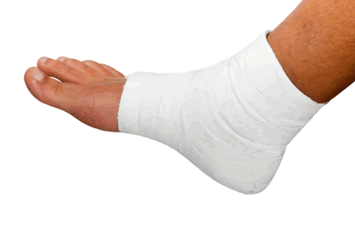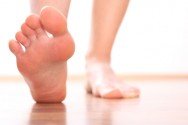July 2015
Cricket Champion Matt Prior Retires Early Due to Achilles tendon Injury
 Matt Prior was forced to end his cricket career early due to a persistent Achilles tendon injury. Although Prior had operated on the injury, he had trouble rehabilitating the tendon and the intensity levels of training would just set him back. The injury had made playing as the Sussex wicketkeeper extremely difficult and painful. Prior is retiring at a very early age thirty-three, but has been thankful to be a part of one of the highest levels of cricket in England.
Matt Prior was forced to end his cricket career early due to a persistent Achilles tendon injury. Although Prior had operated on the injury, he had trouble rehabilitating the tendon and the intensity levels of training would just set him back. The injury had made playing as the Sussex wicketkeeper extremely difficult and painful. Prior is retiring at a very early age thirty-three, but has been thankful to be a part of one of the highest levels of cricket in England.
Achilles tendon injuries need immediate attention to avoid future complications. If you have any concerns contact one of our podiatrists of University Foot and Ankle Center, LLC. Our doctors will treat your foot and ankle needs.
What is the Achilles Tendon?
The Achilles tendon is a tendon that connects the lower leg muscles and calf to the heel of the foot. It is the strongest tendon in the human body and is essential for making movement possible. Because this tendon is such an integral part of the body, any injuries to it can cause severe difficulties and should immediately be presented to a doctor.
What are the symptoms of an Achilles Tendon Injury?
There are various types of injuries that can affect the Achilles tendon. The two most common are Achilles tendinitis and ruptures of the tendon.
Achilles Tendinitis Symptoms
- Inflammation
- Dull to Severe Pain
- Increased blood flow to the tendon
- Thickening of the tendon
Rupture Symptoms
- Extreme pain and swelling in the foot
- Total immobility
Treatment and Prevention
Achilles tendon injuries are diagnosed by a thorough physical evaluation, which can include an MRI. Treatment involves rest, physical therapy, and in some cases, surgery. However, various preventative measures can be taken to avoid these injuries, such as:
- Thorough stretching of the tendon before and after exercise
- Strengthening exercises like calf raises, squats, leg curls, leg extensions, leg raises, lunges, and leg presses
If you have any questions please feel free to contact our offices located in East Brunswick and Monroe Township, NJ. We offer the newest diagnostic tools and technology to treat your foot and ankle needs.
Colorado Rockies’ Corey Dickerson Suffering from Plantar Fasciitis
 Corey Dickerson of the Colorado Rockies left his most recent game against the Dodgers in three innings due to plantar fasciitis pain. The heel pain has been bothering Dickerson’s left foot since spring training and the pain increased as he chased a ball in the outfield. The left fielder has been a key player for the team, but has been struggling in recent months due to his foot pain and has not participated in at least three of the ten Rockies’ games this season.
Corey Dickerson of the Colorado Rockies left his most recent game against the Dodgers in three innings due to plantar fasciitis pain. The heel pain has been bothering Dickerson’s left foot since spring training and the pain increased as he chased a ball in the outfield. The left fielder has been a key player for the team, but has been struggling in recent months due to his foot pain and has not participated in at least three of the ten Rockies’ games this season.
Plantar fasciitis can be very painful and inconvenient. If you are experiencing heel pain or symptoms of plantar fasciitis, visit one of our podiatrists of University Foot and Ankle Center, LLC. Our doctors can treat your heel pain as well as any other foot or ankle condition.
What is Plantar Fasciitis?
Plantar fasciitis is the inflammation of a the thick band of tissue that runs along the bottom of your foot, known as the plantar fascia, and causes mild to severe heel pain.
What Causes Plantar Fasciitis?
· Excessive running
· Non-supportive shoes
· Overpronation
· Repeated stretching and tearing of the plantar fascia
How Can It Be Treated?
· Conservative measures – anti-inflammatories, ice packs, stretching exercises, physical therapy, orthotic devices
· Shockwave therapy – sound waves are sent to the affected area to facilitate healing and are usually used for chronic cases of plantar fasciitis
· Surgery – usually only used as a last resort when all else fails. The plantar fascia can be surgically detached from the heel
While very treatable, plantar fasciitis is definitely not something that should be ignored. Especially in severe cases, speaking to your doctor right away is highly recommended to avoid complications and severe heel pain. Your podiatrist can work with you to provide the appropriate treatment options tailored to your condition.
If you have any questions, please contact our offices in East Brunswick and Monroe Township, NJ. We offer the newest diagnostic and treatment technologies for all your foot and ankle injuries.
Australian Surgeons Try Out Less Invasive Surgical Method for Bunions
 Australian surgeons are now practicing minimally invasive surgery for bunions to reduce the amount of pain and recovery time for patients. Michelle Thacker of North South Wales experienced both minimally invasive surgery and traditional bunion surgery for the bunions on her left and right feet. The difference between the two are that minimally invasive surgeries include a bunch of smaller 3mm incisions with the bunion drilled and realigned with screws; traditional surgeries include one large incision. After the second bunion surgery using minimally invasive surgery, Thacker stated, “the recovery time was much quicker - a lot less pain post op, I can barely see a scar and I was able to run after three months.”
Australian surgeons are now practicing minimally invasive surgery for bunions to reduce the amount of pain and recovery time for patients. Michelle Thacker of North South Wales experienced both minimally invasive surgery and traditional bunion surgery for the bunions on her left and right feet. The difference between the two are that minimally invasive surgeries include a bunch of smaller 3mm incisions with the bunion drilled and realigned with screws; traditional surgeries include one large incision. After the second bunion surgery using minimally invasive surgery, Thacker stated, “the recovery time was much quicker - a lot less pain post op, I can barely see a scar and I was able to run after three months.”
Bunion surgery usually occurs after non-surgical methods have proved to be ineffective. If you have any concerns contact one of our podiatrists of University Foot and Ankle Center, LLC. Our doctors will treat your foot and ankle needs.
What is a Bunion?
A bunion is formed of swollen tissue or an enlargement of boney growth, usually located at the base joint of the toe that connects to the foot. The swelling occurs by the bones in the big toe shifting inward, which impacts the other toes of the foot. This causes the area around the base of the big toe to become inflamed and painful.
Why do Bunions Form?
- Genetics – susceptibility to bunions are often hereditary
- Stress on the feet – poorly fitted and uncomfortable footwear that places stress on feet, such as heels, can cause bunions to form
How are Bunions Diagnosed?
Doctors often perform two tests – blood tests and x-rays – when trying to diagnose bunions, especially in the early stages of development. Blood tests help determine if the foot pain is being caused by something else, such as arthritis, while x-rays provide a clear picture of your bone structure to your doctor.
How are Bunions Treated?
- Refrain from wearing heels or similar shoes that cause discomfort
- Select wider shoes that can provide more comfort and reduce pain
- Anti-inflammatory and pain management drugs
- Orthotics or foot inserts
- Surgery
If you have any concerns please feel free to contact our offices located in East Brunswick and Monroe Township, NJ. We offer the newest diagnostic tools and technology to treat your foot and ankle needs.
The Best Running Shoe is Different for Each Individual Depending on their Foot Type
 The “best shoe” when it comes to running shoes may not necessarily be the best running shoe for everyone. When purchasing new running shoes, it may be best to shop at specialty running stores where employees are trained to find the right shoe for each customer. Running stores will typically measure your feet, gait, and type of running to determine if you are a neutral runner or a runner that needs stability. Each runner has pronation in their feet, the inward roll of the foot as it hits the ground in the running cycle. Different shoes are created to help those that over pronate or under pronate while running.
The “best shoe” when it comes to running shoes may not necessarily be the best running shoe for everyone. When purchasing new running shoes, it may be best to shop at specialty running stores where employees are trained to find the right shoe for each customer. Running stores will typically measure your feet, gait, and type of running to determine if you are a neutral runner or a runner that needs stability. Each runner has pronation in their feet, the inward roll of the foot as it hits the ground in the running cycle. Different shoes are created to help those that over pronate or under pronate while running.
The right running shoe is essentially different for every person. If you have any concerns contact one of our podiatrists of University Foot and Ankle Center, LLC. Our doctors will treat your foot and ankle needs.
Choosing the Right Running Shoes for Your Foot Type
Running is a physical activity although fun, can put a lot of stress on the joints, bones and ligaments of the body. Injury and stress on the foot can be an important factor on which kind of shoe you’re wearing. Running shoes should be worn based on your foot type. It is important to find out what fits you based on cushioning, stability and motion.
Determining your type
Speak with a shoe specialist or retail professional to see what your foot type is. They will be able to identify and measure your arch type, stride and gait.
Running Mechanics
When you are running or walking in your shoes, every step determines how your foot is landing. Pronation is the natural rolling of your ankle from outside to inside during foot strike.
Pronation is a correct form of walking or running. It helps absorb shock and store energy from your lower extremities. Neutral runners who pronate correctly do not need specific shoes, since they have stability and control.
Over-pronators
Those who run with excessive ankle rolling. Over-pronators tend to have ankles that angle inward, flat feet, and or bowed legs. This can cause a series of injuries: of the knees, ankles and Achilles tendons.
Under-pronation
Is less common than over-pronation. This usually happens to those who have inflexible feet and high arches. Even though there is less rotational stress on the ankles and knees, it prevents any kind of shock absorptions. Under-pronation needs shoes with increase in cushion and flexibility.
If you have any questions please feel free to contact our offices located in East Brunswick and Monroe Township, NJ. We offer the newest diagnostic tools and technology to treat your foot and ankle needs.
Blog Archives
- April 2024
- March 2024
- February 2024
- January 2024
- December 2023
- November 2023
- October 2023
- September 2023
- August 2023
- July 2023
- June 2023
- May 2023
- April 2023
- March 2023
- February 2023
- January 2023
- December 2022
- November 2022
- October 2022
- September 2022
- August 2022
- July 2022
- June 2022
- May 2022
- April 2022
- March 2022
- February 2022
- January 2022
- December 2021
- November 2021
- October 2021
- September 2021
- August 2021
- July 2021
- June 2021
- May 2021
- April 2021
- March 2021
- February 2021
- January 2021
- December 2020
- November 2020
- October 2020
- September 2020
- August 2020
- July 2020
- June 2020
- May 2020
- April 2020
- March 2020
- February 2020
- January 2020
- December 2019
- November 2019
- October 2019
- September 2019
- August 2019
- July 2019
- June 2019
- May 2019
- April 2019
- March 2019
- February 2019
- January 2019
- December 2018
- November 2018
- October 2018
- September 2018
- August 2018
- July 2018
- June 2018
- May 2018
- April 2018
- March 2018
- February 2018
- January 2018
- December 2017
- November 2017
- October 2017
- September 2017
- August 2017
- July 2017
- June 2017
- May 2017
- April 2017
- March 2017
- February 2017
- January 2017
- December 2016
- November 2016
- October 2016
- September 2016
- August 2016
- July 2016
- June 2016
- May 2016
- April 2016
- March 2016
- February 2016
- January 2016
- December 2015
- November 2015
- October 2015
- September 2015
- August 2015
- July 2015
- June 2015
- May 2015
- April 2015
- March 2015
- February 2015
- January 2015
- December 2014
- November 2014
- October 2014
- September 2014
- August 2014
- July 2014




